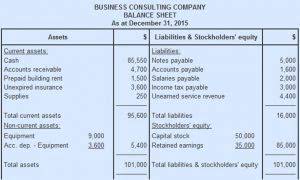
The key to overcoming resistance to change is communication, participation, and collaboration. Communication helps employees understand the need for change, its benefits, and the role that they can play to make it successful. Participation involves involving employees in the change process by giving them a voice, allowing them to contribute their ideas, and involving them in decision-making. Organizations can also adopt debt-avoidance strategies that involve using alternative sources of capital, reducing reliance on debt, and diversifying funding sources. Effective debt management requires a comprehensive understanding of the organization’s financial position, risk tolerance, and cash flow requirements. This is achieved by ensuring that cash flows are well managed, and that any gaps between cash inflows and outflows are identified and closed in a timely and effective manner.

Benefits of Cost Control
Improving employee competencies can increase efficiency, minimize errors, and eliminate the need for external resources. You can plan training and development programs to get workers up to speed quickly. A trained workforce always uses the best practices contributing to production and revenue. By outsourcing functions such as warehousing, transportation, and order fulfillment, businesses can access economies of scale, reduce fixed overhead costs, and more. Moreover, outsourcing provides businesses with greater flexibility to scale their operations up or down according to changing market demands.

Boosts company profits and competitiveness
- For instance, if your estimated cost for a project is $5000 and you realise midway that you’re about to hit the cap, implement corrective measures right then to save yourself from overspending.
- The payback period measures the time it will take for an investment to generate enough cash flow to recoup the original investment.
- By identifying cost reduction opportunities in these and other areas, businesses can develop effective cost reduction strategies that can help them achieve their financial goals.
- This can be done in many ways one of which is using automation systems to finish repetitive tasks.
- These ERP systems help organizations optimize their processes, improve efficiency, enhance data-driven decision-making, and drive overall business growth.
- This method is straightforward and can be useful for projects with repetitive tasks or well-defined unit costs.
It involves scrutinizing each cost component, negotiating favorable deals with suppliers, and seeking operational efficiencies. This plan serves as a detailed roadmap, outlining budgetary allocations, financial goals, and the strategies to achieve them. Regularly revisiting and adjusting the financial plan based on your current business needs ensures that it remains https://www.bookstime.com/articles/xero aligned with the evolving needs and goals of the organization. The management of earned value involves assessing the value of work completed against the planned costs. If the earned value is not greater than the planned costs by whatever margin the business expects to have, then the business will face budget issues.
Break-Even Analysis
There are many strategies and techniques that businesses can employ to master the art of cost control, ensuring a robust financial foundation for future endeavors. To do this you must understand what cost control exactly is, its primary elements, its What is bookkeeping advantages, disadvantages, and how it is different from cost reduction. Cost control involves calculating the required capacity of materials, machinery and labour. When you know how much resources are required, you make better hiring and buying decisions. When you don’t analyse your overall expenditure beforehand and proactively look for ways to control costs, you end up spending more money than you should.

Resource-based cost control estimation can be very accurate but requires detailed project planning. Integrating resource-based estimation into the project management life cycle can help optimize resource allocation and control costs. Parametric estimation uses statistical modeling to estimate costs based on key project parameters.
